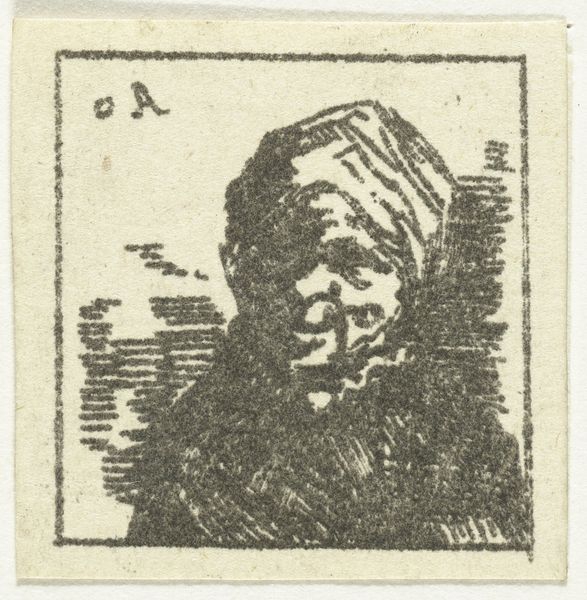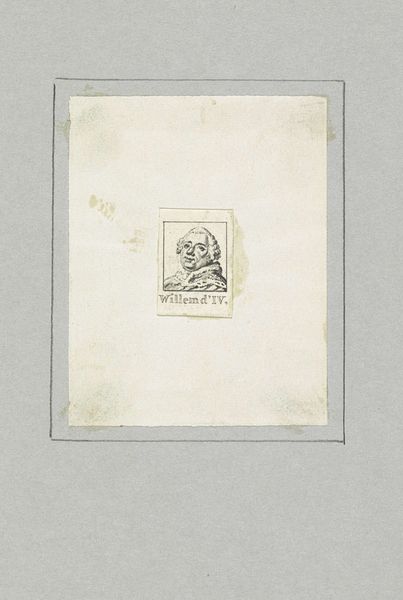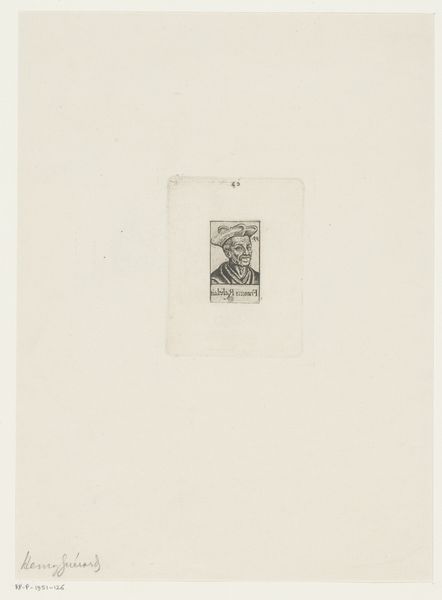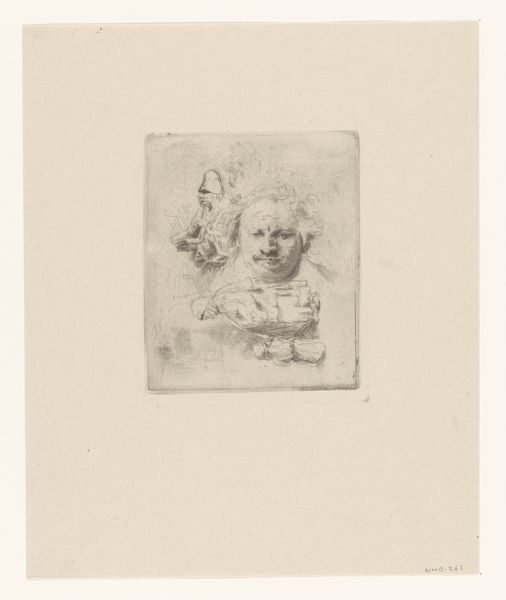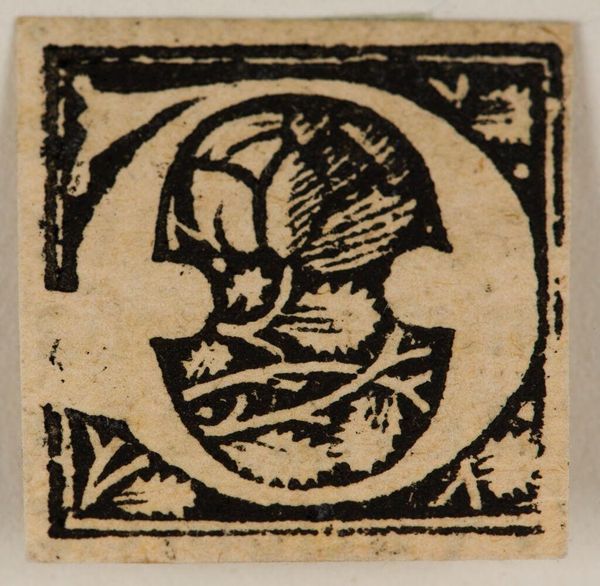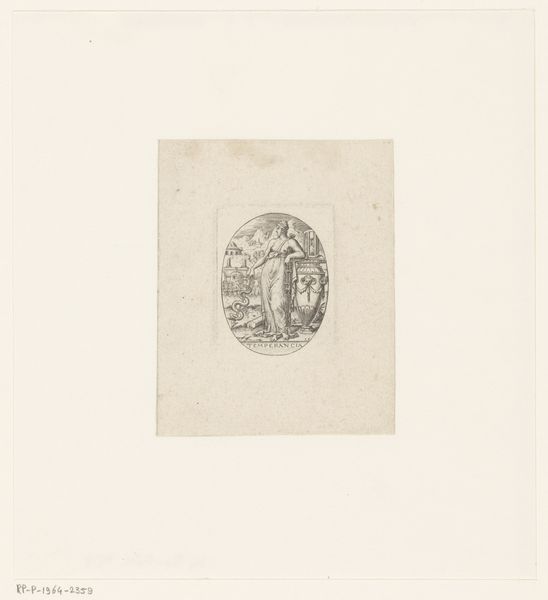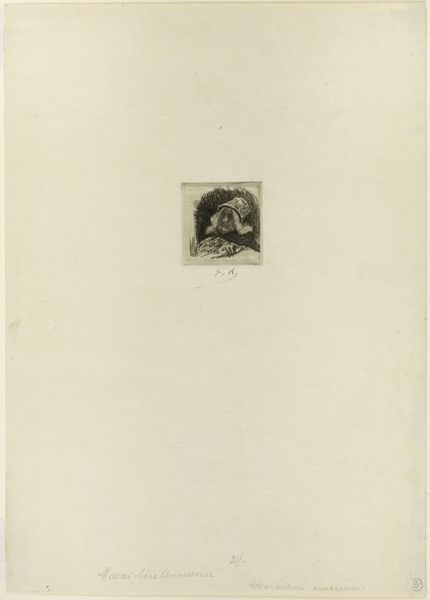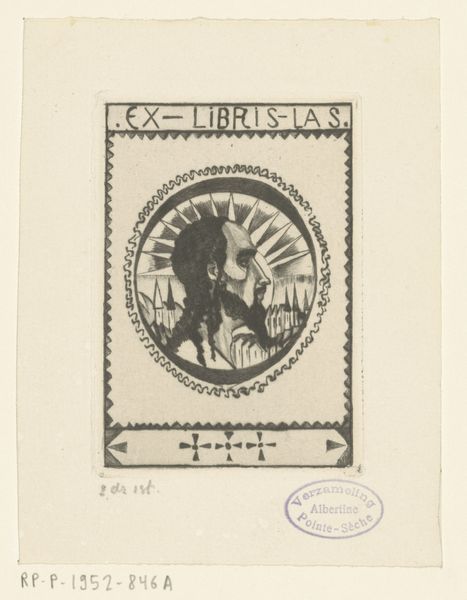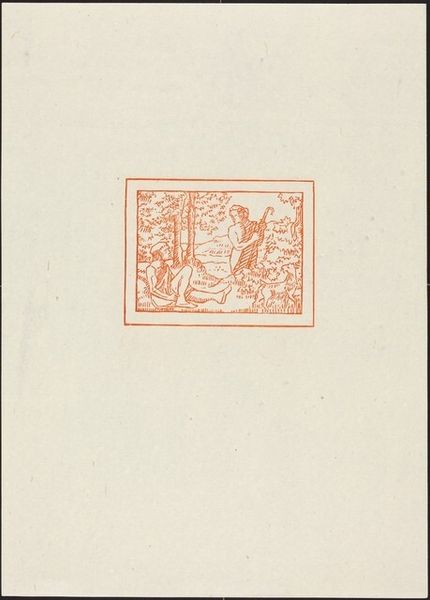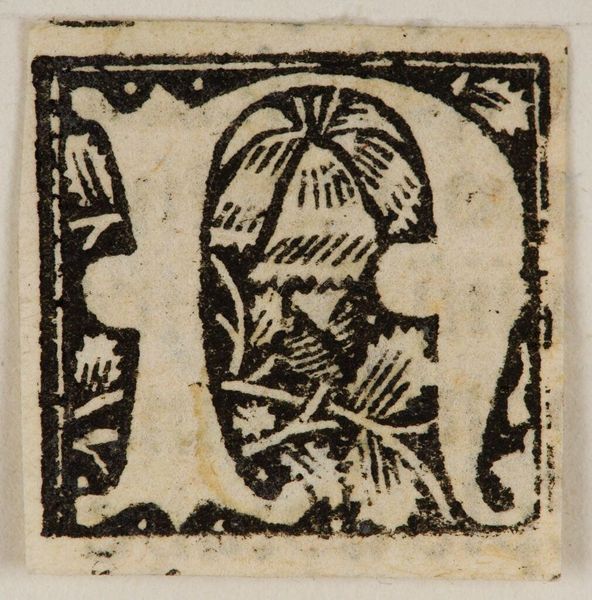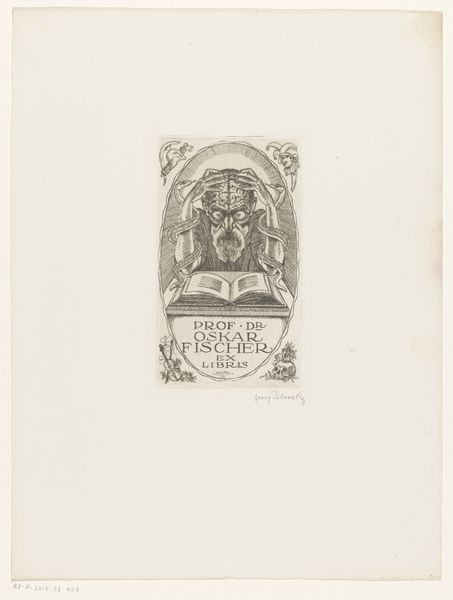
drawing, paper, ink
portrait
drawing
ink painting
figuration
paper
ink
line
Dimensions: height 55 mm, width 50 mm
Copyright: Rijks Museum: Open Domain
Curator: Let’s turn our attention to a piece attributed to Cornelis van den Berg, "Portret van Israhel van Meckenem," likely created sometime between 1720 and 1774. It's a drawing using ink on paper, currently residing here at the Rijksmuseum. Editor: Oh, wow, the immediacy of the line work! It feels almost like a woodcut in its boldness. There’s a real weight and intensity despite the modest scale and aged palette. The figure feels rather… determined. Curator: Indeed. Van den Berg, though not as widely celebrated as some of his contemporaries, provides us with a window into the 18th-century artistic practices and interests, especially this fascination with earlier printmakers like Israhel van Meckenem. Notice the somewhat reverential placement of what appears to be one of Meckenem’s prints just behind him. Editor: Almost like a muse or a point of pride! But I wonder about the act of representation itself. The artist, Van den Berg, portraying a much earlier artist. It feels like a nod to lineage and influence. Is Van den Berg presenting us with a factual portrait, or more of an idealized image of artistic heritage? Curator: Precisely! And that ambiguity is where the politics of imagery come into play. Consider the audiences this work may have been intended for—fellow artists, collectors perhaps. What message is being conveyed about artistic skill, historical appreciation, and the art market itself? Van den Berg uses this portrait to participate in the ongoing discourse about the value of art. Editor: It’s all about the conversation between artists across time, isn't it? Each brushstroke is part of a dialogue that stretches back centuries. This little drawing, rough as it is, encapsulates that enduring connection, like a whispered secret passed down through generations of artists. Curator: Absolutely. And in its own way, the drawing reminds us that even relatively unknown artists can leave a meaningful legacy, contributing to the vast tapestry of art history and challenging our preconceptions about what is valuable or noteworthy. Editor: It's a potent reminder that every artist, no matter how obscure, plays a role in shaping our understanding of beauty, skill, and cultural memory. I see the dialogue here, not only within art but within life. Curator: Nicely said, let us go ahead.
Comments
No comments
Be the first to comment and join the conversation on the ultimate creative platform.
